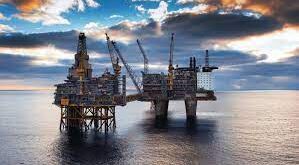Hundreds of millions in decommissioning costs. field depletion. high taxes and low oil prices have been the highlights of media coverage of the UK’s North Sea oil industry. Yet the news is not all bad: the UK government approved a slew of tax incentives for field operators amid the oil price crash. and a few new discoveries have been made—not to mention. perhaps surprisingly. that quite a few billion dollars in M&.A deals have flown into the region.
A recent report from Wood Mackenzie notes that the North Sea has in fact become the second-hottest spot for oil investments. after U.S. shale. That’s largely thanks to private equity’s renewed appetite for oil and gas investments: according to the consultancy. there’s a total of US$15 billion in PE capital waiting to be spent on North Sea acquisitions.
Already. several sizable deals have been made. including Chrysaor’s acquisition of US$3.8 billion worth of Shell North Sea assets. closed in January this year. and. most recently. French Total’s US$7.45-billion takeover of Danish Maersk Oil. most of whose assets reside in the North Sea.
In the first half of 2017. deals worth almost US$6 billionwere sealed in the North Sea oil industry. the Oil &. Gas Authority said in its Economic Report 2017. noting that these and future acquisitions serve as a sign of the industry’s gradual improvement and are a much-needed source of new investment that will ensure future production in the region.
When Shell announced it was divesting part of its North Sea assets. there was concern that everyone would follow. and that this meant there would be no future for the North Sea. but this didn’t happen. Chevron still holds the rights to several of the largest undiscovered fields in the UK Continental Shelf. and Shell still retains assets producing 150.000 bpd in the area. BP. too. is keeping some of its North Sea fields. although it is currently on the lookout for a buyer for the rest.
The North Sea’s problem has always been high production costs. These high costs weighed heavily on E&.Ps when prices crashed in 2014. But. as the Oil &. Gas Authority notes in its report. operation costs per unit in the North Sea have fallen the most across all oil basins in the world. While this doesn’t mean that North Sea field operators can pump crude at Aramco’s production costs. it is attractive enough to motivate further investment.
BP. for instance. has cut its production costs from US$30 a barrel to about US$15. and plans to further reduce this to less than US$12 by 2020. Shell and other producers have managed to cut costs by as much as 60 percent.
The almost 50-percent tax cut for North Sea operators. from 81 to 40 percent. has also served its purpose. stimulating independent. private equity-backed players such as Chrysaor. to enter the North Sea field. The influx of new E&.Ps will continue. the OGA believes. estimating that a third of total North Sea oil production by the end of 2018 will come from fields where operation started this year. That’s some really fast development. and a strong signal that one of the oldest oil-producing region in the world still has quite a few good years ahead of it.

 Iran Energy News Oil, Gas, Petrochemical and Energy Field Specialized Channel
Iran Energy News Oil, Gas, Petrochemical and Energy Field Specialized Channel



